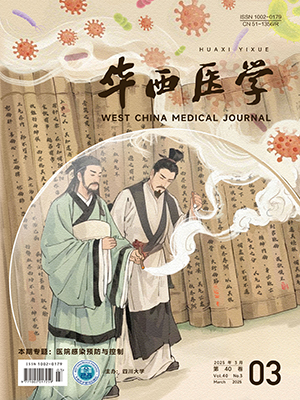| 1. |
Cho CH, Bae KC, Kim DH. Treatment strategy for frozen shoulder. Clin Orthop Surg, 2019, 11(3): 249-257.
|
| 2. |
Uppal HS, Evans JP, Smith C. Frozen shoulder: a systematic review of therapeutic options. World J Orthop, 2015, 6(2): 263-268.
|
| 3. |
Fields BKK, Skalski MR, Patel DB, et al. Adhesive capsulitis: review of imaging findings, pathophysiology, clinical presentation, and treatment options. Skeletal Radiol, 2019, 48(8): 1171-1184.
|
| 4. |
Celik H, Seckin MF, Akcal MA, et al. Mid-long term results of manipulation and arthroscopic release in frozen shoulder. Acta Ortop Bras, 2017, 25(6): 270-274.
|
| 5. |
Hand GC, Athanasou NA, Matthews T, et al. The pathology of frozen shoulder. J Bone Joint Surg Br, 2007, 89(7): 928-932.
|
| 6. |
Tasto JP, Elias DW. Adhesive capsulitis. Sports Med Arthrosc Rev, 2007, 15(4): 216-221.
|
| 7. |
Itoi E, Arce G, Bain GI, et al. Shoulder stiffness: current concepts and concerns. Arthroscopy, 2016, 32(7): 1402-1414.
|
| 8. |
Hawker GA, Mian S, Kendzerska T, et al. Measures of adult pain: Visual Analog Scale for pain (VAS pain), Numeric Rating Scale for pain (NRS pain), McGill Pain Questionnaire (MPQ), Short-Form McGill Pain Questionnaire (SF-MPQ), Chronic Pain Grade Scale (CPGS), Short Form-36 Bodily Pain Scale (SF-36 BPS), and Measure of Intermittent and Constant Osteoarthritis Pain (ICOAP). Arthritis Care Res (Hoboken), 2011, 63(11): S240-S252.
|
| 9. |
Constant CR, Murley AH. A clinical method of functional assessment of the shoulder. Clin Orthop Relat Res, 1987(214): 160-164.
|
| 10. |
Vastamäki H, Kettunen J, Vastamäki M. The natural history of idiopathic frozen shoulder: a 2- to 27-year follow up study. Clin Orthop Relat Res, 2012, 470(4): 1133-1143.
|
| 11. |
Chan HBY, Pua PY, How CH. Physical therapy in the management of frozen shoulder. Singapore Med J, 2017, 58(12): 685-689.
|
| 12. |
Elnady B, Rageh EM, Hussein MS, et al. In shoulder adhesive capsulitis, ultrasound-guided anterior hydrodilatation in rotator interval is more effective than posterior approach: a randomized controlled study. Clin Rheumatol, 2020, 39(12): 3805-3814.
|
| 13. |
Pandey V, Madi S. Clinical guidelines in the management of frozen shoulder: an update!. Indian J Orthop, 2021, 55(2): 299-309.
|
| 14. |
Cao XY, Zhao HY. A pilot study of ultrasound-guided acupotomy for the treatment of frozen shoulder. Medicine (Baltimore), 2019, 98(42): e17632.
|
| 15. |
Do JG, Hwang JT, Yoon KJ, et al. Correlation of ultrasound findings with clinical stages and impairment in adhesive capsulitis of the shoulder. Orthop J Sports Med, 2021, 9(5): 23259671211003675.
|
| 16. |
Sernik RA, Vidal Leão R, Luis Bizetto E, et al. Thickening of the axillary recess capsule on ultrasound correlates with magnetic resonance imaging signs of adhesive capsulitis. Ultrasound, 2019, 27(3): 183-190.
|
| 17. |
郭璇妍, 卢漫, 贺凡丁, 等. 超声引导下关节腔注射联合关节囊扩张治疗冻结肩. 中国医学影像技术, 2018, 34(7): 1081-1084.
|
| 18. |
Akbar M, McLean M, Garcia-Melchor E, et al. Fibroblast activation and inflammation in frozen shoulder. PLoS One, 2019, 14(4): e0215301.
|
| 19. |
de la Serna D, Navarro-Ledesma S, Alayón F, et al. A comprehensive view of frozen shoulder: a mystery syndrome. Front Med (Lausanne), 2021, 8: 663703.
|
| 20. |
Yoon JP, Chung SW, Kim JE, et al. Intra-articular injection, subacromial injection, and hydrodilatation for primary frozen shoulder: a randomized clinical trial. J Shoulder Elbow Surg, 2016, 25(3): 376-383.
|
| 21. |
Wu WT, Chang KV, Han DS, et al. Effectiveness of glenohumeral joint dilatation for treatment of frozen shoulder: a systematic review and meta-analysis of randomized controlled trials. Sci Rep, 2017, 7(1): 10507.
|
| 22. |
Wang JC, Tsai PY, Hsu PC, et al. Ultrasound-guided hydrodilatation with triamcinolone acetonide for adhesive capsulitis: a randomized controlled trial comparing the posterior glenohumeral recess and the rotator cuff interval approaches. Front Pharmacol, 2021, 12: 686139.
|
| 23. |
Kanbe K. Clinical outcome of arthroscopic capsular release for frozen shoulder: essential technical points in 255 patients. J Orthop Surg Res, 2018, 13(1): 56.
|
| 24. |
Lee SH, Yoon C, Chung SG, et al. Measurement of shoulder range of motion in patients with adhesive capsulitis using a kinect. PLoS One, 2015, 10(6): e0129398.
|




